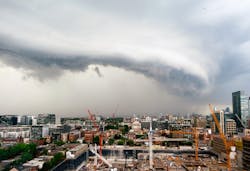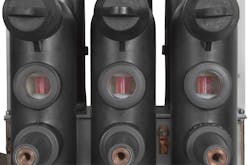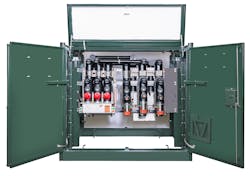We rely on electricity in nearly every aspect of our lives and utilities to manage the safe and reliable distribution of power to homes, communities and industrial sites, along with communications and transportation systems. Growing electric demand and frequency of severe weather conditions around the country are straining an aging infrastructure and its ability to support capacity in many areas. In the last decade, the average annual number of weather-related power outages increased by roughly 78%. When extreme events impact our electricity, restoring power cannot occur fast enough.
As electrification needs continue to evolve across residential, commercial, industrial and transportation sectors, many utilities are implementing undergrounding strategies aimed at protecting systems, increasing reliability and improving grid resiliency. In areas where wildfires are a threat, undergrounding reduces ignitions by 99%, making it one of the most effective ways to safeguard communities. For example, Pacific Gas and Electric Company (PG&E) is actively working to underground more powerlines and reduce the risk of catastrophic wildfires through its 10,000-mile undergrounding program, the largest of its kind in the U.S.
Often part of a long-term approach to electric utility and infrastructure planning and storm hardening programs, more communities are expanding their electrical system underground to help:
- Minimize outages caused by line contact from trees, falling limbs, lightning, high winds, ice and heavy snow.
- Prevent wildfires from equipment ignition.
- Improve the environment, aesthetics, road safety of drivers and equipment security.
- Extend system lifespan and reduce maintenance.
Groundbreaking Solutions for Undergrounding
Developments in technology, equipment, insulation materials and installation methods are enabling utilities to more easily underground lines or add automation for minimal maintenance and fast recovery. While every infrastructure, reconfiguration and upgrade project is unique, it involves either converting or reusing existing structures or installing new systems and components.
Today’s more compact options can be installed through narrow passages and manholes. Utilities frequently work with ABB engineers and R&D specialists to integrate standard designs and modify products with configurable solutions that drop-in to an existing footprint or foundation.
Advances in switchgear technology are helping distribute electricity more efficiently in power systems and greatly improve worker safety. Maintaining critical switchgear equipment presents risk for utility workers and led the ABB Installation Products’ team to continue to innovate and expand its line of Elastimold® solid dielectric molded vacuum switchgear by developing Tru-Break™ modules with a patented viewing window to visually verify the circuit is de-energized. The newest single-phase Elastimold Tru-Break module is compact, submersible and modular to allow for new installations and conditional retrofitting onto existing single-phase Elastimold molded vacuum switches (MVS), molded vacuum interrupters (MVI) and multi-way switchgear systems.
Providing a visual open increases the safety of solid dielectric underground or pad-mounted systems and the dead-front construction of the Elastimold switchgear has no exposed energized components to be safer for electrical crews. Designed for the harshest environments, ABB’s Elastimold solid dielectric switchgear is made of proprietary ethylene propylene diene monomer (EPDM) rubber insulation and contains no oil or gas to be monitored or maintained, making it virtually maintenance-free. This is important as many utilities update equipment and transition to SF6-free alternatives to address environmental concerns or increasing O&M costs.
Another crucial area of concern is preventing outages from water entering underground pipes and flooding buried infrastructure. Watertight solutions from ABB’s Homac® underground systems include Flood-Seal® bus connectors, which are extensively tested to ensure ingress protection and insulation integrity and used by electric utilities in substations and underground power lines.
Underscoring the Value of Undergrounding
Weather, wildfires and other extreme events can result in large-scale power outages due to the connected structure of the grid. From an individual home to entire regions, utilities are doing more than staying ahead of the storm – they are integrating safer, innovative solutions and proactive strategies such as buried utilities to lessen damage, disruption and downtime and keep electricity flowing.
Ralph Donati is EVP and GM of the US and Latin America Regions for ABB Installation Products.
Sponsored by:
About the Author
Ralph Donati
Ralph Donati is EVP and GM of the US and Latin America Regions for ABB Installation Products



